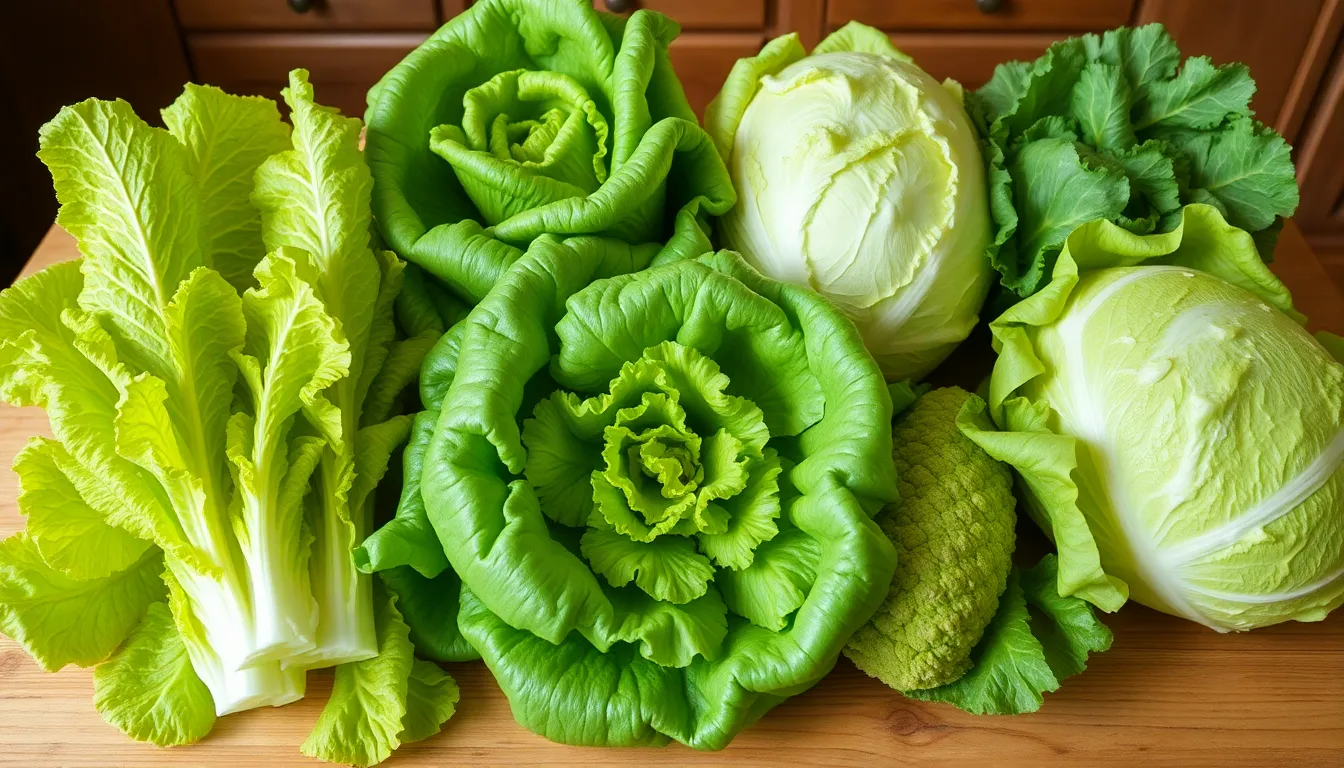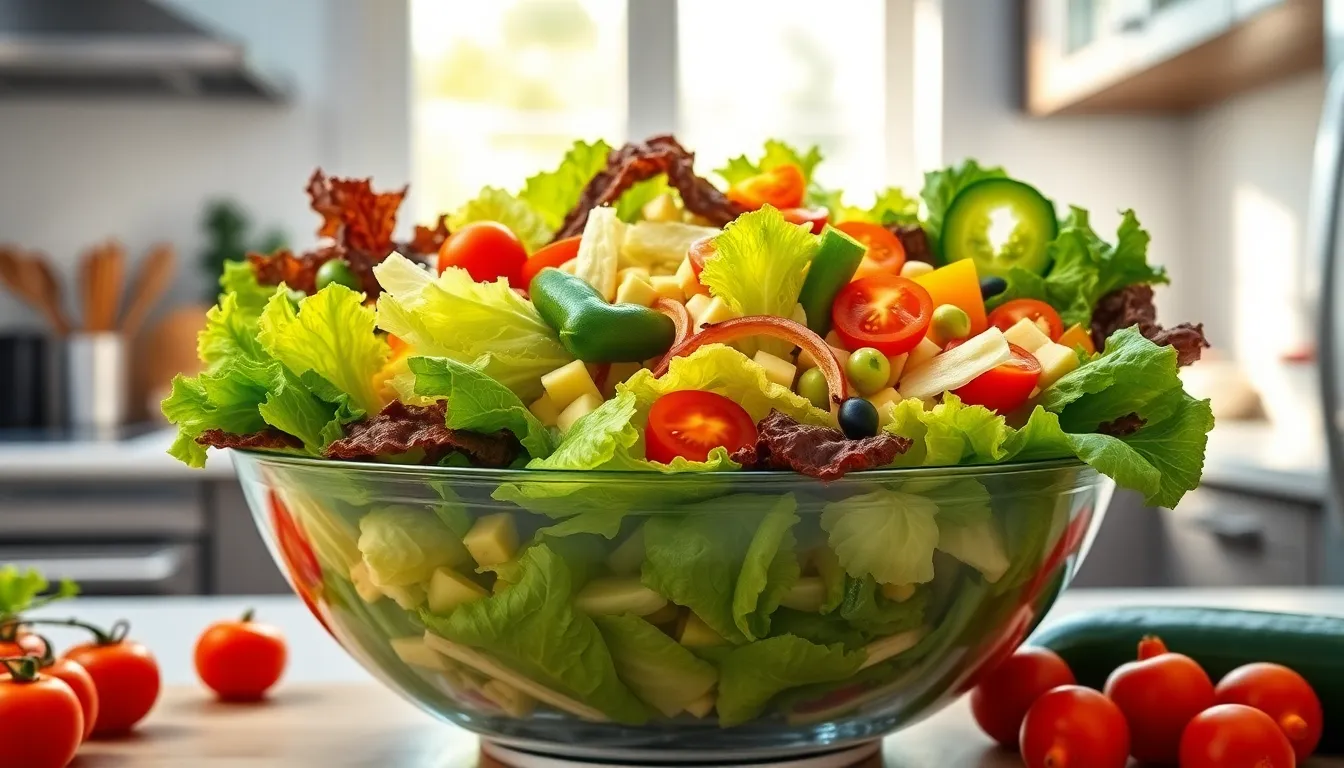Lettuce may seem like a simple salad staple, but it’s time to give this leafy green a little more credit. Often overshadowed by its more glamorous veggie friends, lettuce has been quietly crunching its way into our meals for centuries. But is it really high in fiber? Spoiler alert: it’s not exactly the fiber powerhouse you might be hoping for.
Table of Contents
ToggleWhat Is Fiber?
Fiber plays a crucial role in digestive health and overall wellness. This essential carbohydrate is not digestible but offers numerous benefits when included in the diet.
Types of Fiber
Two primary types of fiber exist: soluble and insoluble. Soluble fiber dissolves in water and helps control blood sugar levels and lower cholesterol. Oats, beans, and some fruits contain this type of fiber. Insoluble fiber, on the other hand, doesn’t dissolve in water. Whole grains, nuts, and vegetables fall under this category. Both types contribute to health but serve different functions within the body.
Health Benefits of Fiber
Fiber offers several health benefits that promote good digestion and support various bodily functions. Regular fiber intake can help prevent constipation by adding bulk to stools. This promotes regular bowel movements. Additionally, fiber-rich diets may reduce the risk of developing heart disease by lowering cholesterol levels. Consuming enough fiber also aids in weight management, as it helps individuals feel full longer. Furthermore, a high-fiber diet is linked to better blood sugar control. Balance in daily fiber intake strengthens overall health and well-being.
Nutritional Profile of Lettuce

Lettuce provides a range of essential nutrients while contributing low-calorie options to meals. It’s crucial to understand what vitamins and minerals it contains.
Vitamins and Minerals in Lettuce
Lettuce offers several vitamins and minerals beneficial to health. It contains Vitamin A, which supports vision and immune function. Vitamin K, found in lettuce, plays a key role in blood clotting and bone health. Folate contributes to cell division and is especially important for pregnant women. Calcium strengthens bones and teeth, while potassium helps regulate blood pressure. These nutrients combined create a profile that supports overall wellness.
Fiber Content in Different Types of Lettuce
Fiber content varies across types of lettuce. Romaine lettuce provides approximately 1 gram of fiber per 100 grams. Iceberg lettuce, on the other hand, has around 0.5 grams of fiber per 100 grams. Leafy varieties such as butterhead can contain slightly more, but overall, lettuce remains a low-fiber food option. For individuals looking to increase fiber intake, adding other vegetables or whole grains alongside lettuce proves beneficial.
Is Lettuce High in Fiber?
Lettuce offers minimal fiber compared to many other vegetables. While it provides nutrients, its fiber content doesn’t meet expectations for those seeking high-fiber options.
Comparing Lettuce to Other Vegetables
Many vegetables surpass lettuce in fiber content. For example, broccoli contains about 2.6 grams of fiber per 100 grams, and carrots offer approximately 2.8 grams. Spinach provides around 2.2 grams, making it a more fiber-rich choice. Peas, with 5.7 grams per 100 grams, present an even better alternative. Such comparisons reveal that individuals seeking significant fiber in their diets should consider these options alongside or instead of lettuce.
Factors Affecting Fiber Content
Several factors influence the fiber content in lettuce. Variety plays a crucial role; for instance, romaine contains more fiber than iceberg lettuce. Growing conditions, soil quality, and maturity at harvest also impact fiber levels. Additionally, preparation methods can alter fiber availability; cooking may reduce fiber content, while raw consumption retains it. Eating a mix of vegetables ensures a more balanced fiber intake for optimal health benefits.
How to Incorporate Lettuce into Your Diet
Incorporating lettuce into meals complements a balanced diet. It adds crunch and freshness, increasing nutrient intake.
Creative Recipes with Lettuce
Wraps serve as a fantastic way to utilize lettuce. Using large leaves, create a healthy wrap filled with grilled chicken, veggies, and a light sauce. Salads also provide variety; mixing romaine with bell peppers, cucumbers, and a citrus vinaigrette maximizes flavor. Another option involves creating lettuce tacos, where users can fill leaves with beans, salsa, and avocado for a nutritious twist. For unique dishes, consider lettuce in smoothies; blending lettuce with fruit results in a refreshing beverage.
Pairing Lettuce with High-Fiber Foods
Combining lettuce with high-fiber foods elevates meal nutrition. Pairing with legumes, such as black beans or lentils, boosts fiber content significantly. Incorporating whole grains, like quinoa or brown rice, creates a filling salad base. Topping greens with sliced almonds or chia seeds enhances crunch while increasing fiber and nutrient density. Including avocados not only adds creaminess, but also provides healthy fats and additional fiber. For diverse meals, adding roasted vegetables, such as Brussels sprouts or carrots, complements lettuce and turns it into a wholesome dish.
Lettuce may not be the fiber powerhouse some might hope for but it still plays a valuable role in a healthy diet. Its low-calorie nature and rich nutrient profile make it a great addition to meals. By incorporating lettuce alongside higher-fiber foods like beans and whole grains, individuals can enhance their overall fiber intake while enjoying a variety of flavors and textures. Embracing a diverse range of vegetables ensures a balanced approach to nutrition, supporting digestive health and overall well-being.




